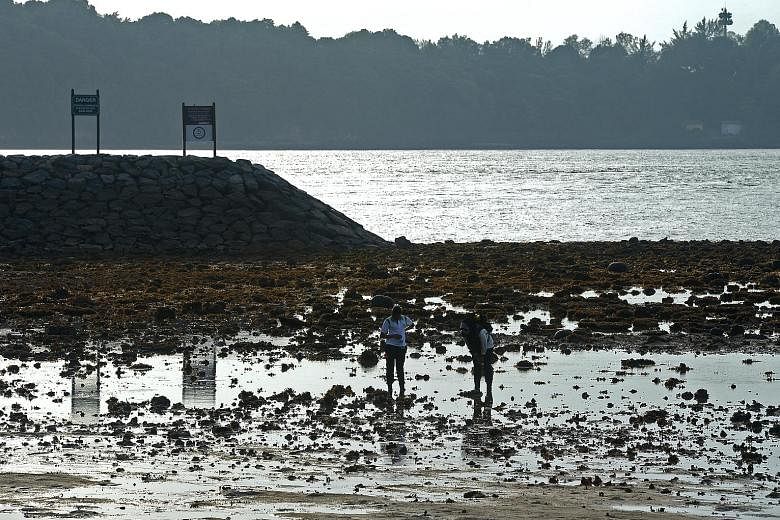Marine conservation efforts in Singapore have undergone a sea change since the 1980s.
What was a cause championed mainly by conservationists has now become a guiding principle for Singapore as it develops its coasts and people, said marine conservation veteran Chou Loke Ming, an adjunct research professor at the National University of Singapore's Tropical Marine Science Institute.
Last month, for example, the National Parks Board (NParks) announced a slew of outreach and research plans for the Republic's marine park, including intertidal pools and boardwalks, that will allow people to get up close with marine life.
The Maritime and Port Authority is also working to save corals in the way of a port development in Tuas, said Prof Chou. It has moved to relocate affected corals, and is working with marine biologists to nurture fragments in coral nurseries.
These measures are vastly different from land reclamation work done before the 1990s.
"The awareness started in the mid-1990s," Prof Chou said. "I'm not too sure why, but I guess the 1992 Rio Declaration, which Singapore supported, triggered it."
In the late 1990s, NParks, whose remit was primarily terrestrial, started getting involved in marine biodiversity conservation, said Dr Lena Chan, group director of NParks' National Biodiversity Centre.
In the 20 years since, the marine conservation movement has chalked up many wins.
The mangroves and wetlands of Sungei Buloh were first saved from development in 1993, when it was designated a nature park, and further protected in 2002, when it was given the status of wetland reserve.
In another landmark move, Pulau Ubin's Chek Jawa wetlands were saved from reclamation in 2001. "It was the first time that a marine development was deferred in favour of conservation," said crab expert Peter Ng, head of the Lee Kong Chian Natural History Museum.
In 2014, Singapore opened Sisters' Islands Marine Park, its first marine park. Senior Minister of State for National Development Desmond Lee, who announced its opening two years ago, told The Straits Times last week: "It was a happy coincidence that we were able to bring everything together in time to announce the launch of Sisters' Islands Marine Park in 2014, just before our SG50 celebrations last year!"
Mr Lee noted that strong ties have been forged among agencies, researchers, blue groups and the community.
Considering Singapore's status as a maritime nation, the recognition of the importance of its marine habitats has been a long time coming.
Singapore's waters are home to 200 species of sponges, over 100 species of reef fish and more than 250 species of hard corals - more than 30 per cent of hard coral species found worldwide.
Mr Stephen Beng, chairman of the marine conservation group of the Nature Society (Singapore), said: "Knowledge of what we have on and off the coastlines of our main island, and our little ones, encourages us to coexist with the many plants and animals living on our remaining natural areas."
Singapore is on its way to achieving this. Said Prof Chou: "For a small country with limited sea space under intense use, (the change) is to me a crowning achievement."
The 69-year-old has three decades of marine conservation work, and has dedicated his life to achieving his dreams for Singapore, even after he retired last year. He now hopes for clearer waters, improved seawater quality in compromised areas and more local marine biologists in higher positions of responsibility.


